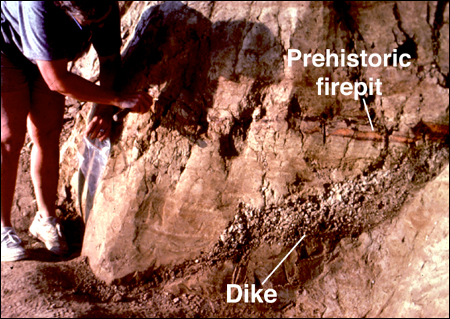

Let us now see how the effects of various
paleo-earthquakes were separated from one another. Two methods
were used primarily; one used radiocarbon dating, and the other
used archeological artifacts. Many samples for radiocarbon dating
were found in the soil zone (A- and B-horizons) along the base
of the vented sand, in the form of charcoal from ancient tree
stumps and firepits of paleo-Indians. Also in soil horizons throughout
the vertical section were numerous artifacts such as spear points
and pottery, which in some cases could be bracketed within hundreds
of years because of unique styles of manufacture.
40. Here is a commonly observed relation, in which the level containing an ancient Indian firepit (the 5-cm-thick bright-red horizontal layer underlain by a thin black layer) is cut by a dike (along the right side of the photograph). Obviously the dike post-dates the firepit.
For more information, contact Stephen F. Obermeier